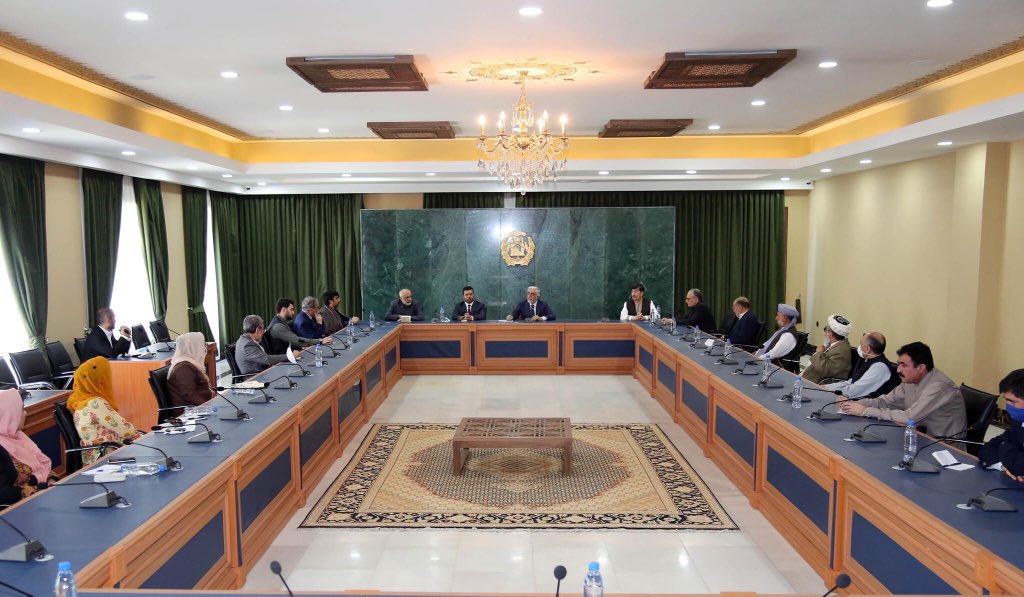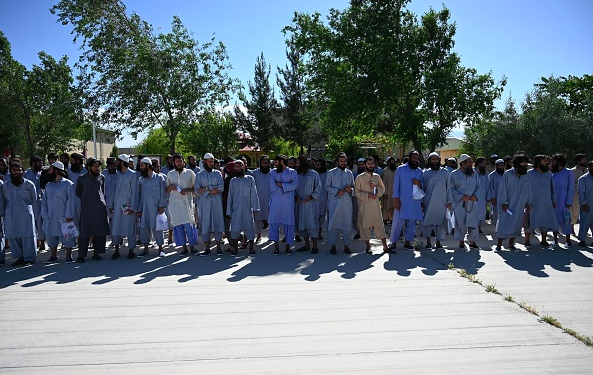
The imminent announcement of a date and venue for possible intra-Afghan talks—the first round of negotiations between the Afghan government and the Taliban—has generated optimism about the possibility of a peaceful political settlement in Afghanistan. As both parties have acknowledged on numerous occasions, the current conflict demands an effective political solution, and the present moment may hold unprecedented potential for a settlement. This by no means suggests an easy road ahead, however, nor that peace can be taken for granted. It is likely that the process will unfold in a manner that demands both the Afghan government and the Taliban compromise their respective hardline positions. Two principal sets of challenges remain: the first—institutional ambiguities and a lack of genuine government consensus—may hinder the process ahead of the negotiations, and the second—the sensitive topics likely to appear on the negotiating agenda—might stymie the negotiation process itself.
The Civil Government’s Bargaining Position and its Challenges
As both parties have acknowledged on numerous occasions, the current conflict demands an effective political solution, and the present moment may hold unprecedented potential for a settlement. Nonetheless, it is likely that the process will unfold in a manner that demands both the Afghan government and the Taliban compromise their respective hardline positions.
From the Afghan government’s point of view, the most advantageous scenario would be a genuine Afghan-led and Afghan-owned process aligned with its negotiating position. The Afghan government’s position in the negotiations is buttressed by support from its neighbors and other important international actors such as the United States, the European Union, Russia, China, India and Pakistan. Afghanistan’s most important allies—the United States and NATO—will not withdraw their troops fully unless the conditions are met by the Taliban and unless the negotiations achieve concrete results, including a permanent ceasefire and guarantees on peace agreement implementation.
Recent developments, most notably the formation of the High Council for National Reconciliation (HCNR) on May 17, would also bode well for the government. The HCNR was born out of a political deal between the contending candidates in the controversial 2019 election, conferring Abdullah Abdullah leadership of the peace process and Ashraf Ghani the presidency. Now, nearly all political parties and major politicians that were divided between the two camps have lined up behind the government in support of its peace agenda, projecting a semblance of national cohesion on the issue.
Despite this semblance of unity, however, organizational ambiguities and a lack of genuine national consensus threaten to undercut the government’s position. The earlier U.S.-Taliban talks—which bypassed the Afghan government in negotiating the withdrawal of foreign troops—might deny the Afghan government its greatest bargaining potential.
Institutional redundancy is one of the clearest examples of this. In Afghanistan, peace and reconciliation bodies are as old as the insurgency itself. The recent HCNR is the fifth such body to have formed. Yet at least two other institutions with a similar capacity continue to operate parallel to the HCNR. These include the High Peace Council (2010–) and the State Ministry for Peace (SMP) (2019–). The HCNR is meant to be a body that oversees all the peace process affairs, and the SMP is its secretariat. The HPC’s status and purpose is as yet unclear. In addition, the stipulations in the agreement regarding the mandate and responsibilities of the HCNR are too ambiguous to discourage or minimize fatal disagreements and contention.
These competing and at times overlapping bodies that are shrouded in ambiguous mandates indicate a lack of national consensus. Although the political deal between the two candidates projects the appearance of alignment, a true consensus is much more complex in that it would involve agreement on contentious issues of national significance. It is clear that Afghanistan is far from such a consensus—various parties agree that they want peace but have yet to define what that peace would look like and the types of political and legal arrangements it would entail. The agenda is still unclear as is the process through which an agenda would be developed.
Similarly, political party lines do not account for the needs and perspectives of a diverse Afghan populace. Coming to a genuine consensus requires painstaking debates and discussions spanning disparate ethnic and demographic groups and social and political strata within civil society. Ethnic minorities, victims of violence, women, and some of the more peripheral political parties and media outlets ought to have more of a voice in a process that disproportionately affects them. A national consensus cannot be achieved without vigorous and exhaustive discussions on key parts of the agenda, including the terms of negotiation, the extent to which compromises can be made, and the manner in which we collectively envision a just society that can sustain a durable peace. This would also demand greater understanding on the form of the future government, decentralization of power, and transitional justice, which are central to this peace.

The Worst Scenario: Failed Peace Talks
If the aforementioned challenges are not overcome and left unaddressed, a worst-case scenario— the failure of talks and demise of this historic opportunity—might come to pass. If the government fails to unite and incorporate factions on its side of the negotiation table, the Taliban would likely develop significantly greater sway. Regional actors, most notably Pakistan, but also Iran and Russia, would likely throw their support behind the Taliban in an attempt to fill the void left by the United States. Alongside an escalation in violence, the Taliban would push harder for their political vision, an Islamic Emirate characterized by strict sharia law, nullification of the current constitution, and roll back of the constitutional rights of citizens. In the event that the peace talks fail, it seems unlikely that U.S. troops would remain in the country. This would be disastrous for Afghanistan. A lack of international support—in the wake of a pandemic that has brought economic downturn—might yield a humanitarian disaster and perhaps even a civil war.
However, this scenario seems unlikely, for two reasons. First, Afghanistan’s allies, including the United States and the European Union, have supported the post-2001 democratic gains and may work to forestall such a scenario through some form of political and diplomatic intervention and/or mediation. The Afghan government would likely seek out such support. It has, at least rhetorically, taken on the mantle of defending the principles of the republic, including the constitution, and the constitutional rights of citizens. Second, it is likely that the negotiators would manage to arrive at some middle ground through compromise.
The Taliban have also tacitly indicated their support for the talks by continuing to release Afghan prisoners. This indicates that both parties and their allies understand the urgency of a political settlement at this particular moment.
A Middle Ground Scenario
A middle ground seems the most likely scenario for a number of reasons, including public statements from the European Union, the UN and other regional powers in support of the talks, the existing U.S.-Taliban deal, and growing regional recognition of the Taliban. The Taliban have also tacitly indicated their support for the talks by continuing to release Afghan prisoners. This indicates that both parties and their allies understand the urgency of a political settlement at this particular moment. Key actors, including Pakistan, are likely to balance their support of the Afghan government and the Taliban because in their eyes, the Taliban will be an important part of the future government. The Afghan government appears inclined to heed international messaging and engage pragmatically with the Taliban—it has already demonstrated its willingness to do so in releasing Taliban prisoners. However, one issue that may undercut the Afghan government’s position in this scenario is U.S. capriciousness regarding its withdrawal plan and Pakistan’s possible tilt towards the Taliban.
This middle ground would involve both parties tempering their stances vis-à-vis each other and the power balance in Afghanistan. Some sensitive topics require extensive discussion. Reaching some agreement on terms for the integration of Taliban fighters into the security forces and civilian life, transitional justice, amending the constitution, reconstruction—all tied up in rectifying the deep-rooted traumas civilians have long suffered—could take years. It will also require both parties to draft power-sharing arrangements and reconfigure the state institutions to satisfy both to some degree.
Conclusion: Prospects Dim for Now
Given this unique set of challenges, Afghanistan’s peace process is likely to proceed slowly, and along a bumpy road. Even if the negotiations begin—itself an accomplishment—managing polarized ethnic identities, reconfiguring the state and its institutions, transitional justice, reintegration of fighters, and the reality of threats from other terrorist groups will be topics of contention that can stymie the process to a breaking point. It is here that each side would have to determine the price they would be willing to pay for a possible peace agreement, and whether this would indeed engender a sustainable peace. This type of compromise demands honest political acumen, wisdom and moral courage on both sides. The heartbreaking number of casualties from years of violence and political instability in the country provide the exigent circumstances for such moral courage.
Editor’s Note: In this series, SAV contributors from Afghanistan, India, Pakistan, and the United States weigh in on regional perspectives of Afghanistan’s future. Contributors discuss key trends that regional actors and the United States are watching for in the months and years ahead, the role each actor may play in the intra-Afghan negotiating process, and their stake in Afghanistan’s future stability and governance. Read the full series here.
***
Click here to read this article in Urdu.
Image 1: Dr. Abdullah Abdullah via Twitter
Image 2: Wakil Kohsar/AFP via Getty Images


